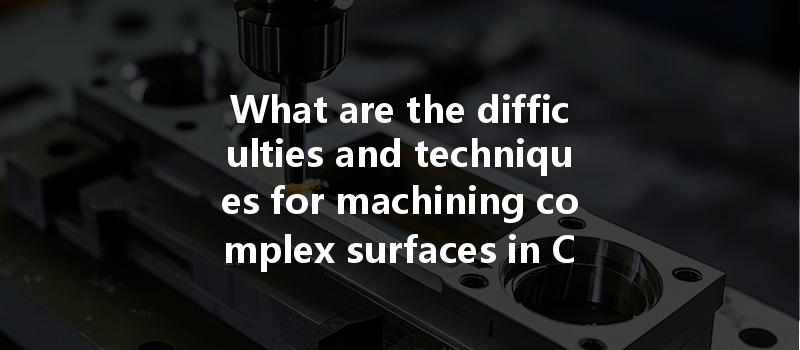: The Rise of CNC Machining and Its Complexities
Did you know that the global CNC machining market is expected to reach $100 billion by 2027? With advancements in technology, companies are now capable of creating intricate designs and parts that would have been unimaginable just a few decades ago. Computer Numerical Control (CNC) machining has revolutionized manufacturing, allowing for precise and efficient machining of complex components across industries, from aerospace to medical devices.
Yet, despite its numerous benefits, CNC machining of complex surfaces presents its own set of challenges. Inefficiencies can arise from various factors such as tool wear, vibration, material properties, and the design of the part itself. This blog will delve deeply into the difficulties encountered when machining complex surfaces and provide a comprehensive guide to overcoming these challenges. With solid techniques and strategies, manufacturers can enhance their operations and achieve exceptional quality in their products.
Understanding Complex Surfaces
Before diving into the challenges, it’s crucial to define what constitutes a complex surface. In essence, a complex surface is one that features intricate geometries, including curvatures, recesses, undercuts, or varying thicknesses. Such designs are prevalent in high-tech industries, where precision and aesthetics are paramount.
Key Characteristics of Complex Surfaces:
The Challenges of Machining Complex Surfaces
When it comes to CNC machining complex surfaces, several primary challenges are consistently encountered. Understanding these challenges is the first step to devising solutions.

Techniques for Effective Machining of Complex Surfaces
Understanding the challenges is only half the battle. The following techniques aim to provide practical solutions to those challenges.
Adaptive machining involves adjusting the machining parameters in real-time based on the changing conditions of the machining environment. This can include altering feed rates, speeds, and tool engagement based on real-time feedback from the CNC machine.
Multi-axis CNC machines can simultaneously move a tool across multiple axes, allowing for greater freedom in tool movement. This capability is crucial for effectively machining complex surfaces as it reduces the need for multiple setups and ensures higher accuracy.
By combining traditional machining with additive manufacturing, complex parts can be created with enhanced precision. This hybrid process allows for the creation of complex geometries that would otherwise be challenging to achieve.
Before actual machining, using simulation software helps visualize the machining process, tool movement, and potential collisions. By simulating the operation, manufacturers can identify issues beforehand, saving time and resources.
Utilizing post-processing techniques, such as polishing or surface finishing, can greatly improve the final product’s quality. These finishing strategies can help mitigate the imperfections that sometimes arise from the complexity of the machining process.
Case Studies and Real-World Applications
To illustrate these techniques in action, let’s explore some case studies.
Case Study 1: Aerospace Component Manufacturing
A leading aerospace manufacturer faced challenges in machining turbine blade components with complex geometries. Through the implementation of multi-axis machining combined with detailed CAD simulation, the company reduced machining time by 30% while improving accuracy to meet stringent industry standards.
Case Study 2: Automotive Industry
An automotive parts manufacturer struggled with vibrations causing poor surface finish on gear components. By investing in vibration-dampening mounts and utilizing adaptive machining strategies, the company improved surface finish quality and reduced waste, leading to significant cost savings and increased customer satisfaction.
Future Trends in CNC Machining Complex Surfaces
The landscape of CNC machining continues to evolve, driven by technological innovations. Here are some trends to watch:
: Embracing The Complexities
Machining complex surfaces in CNC processing represents both a challenge and an opportunity for innovation in manufacturing. By understanding the intricacies involved and implementing effective techniques, companies can navigate these challenges successfully.
The importance of this topic should not be underestimated. As industries continue to demand higher precision and efficiency, mastering the art of machining complex surfaces will be key to staying competitive. Embracing new technologies, enhancing machine capabilities, and focusing on adaptability will be essential in driving future success.
In summary, with the right tools, techniques, and mindset, the complexities of CNC machining can be effectively managed to produce high-quality products. In a world where technology continuously evolves, staying informed and adaptable will empower manufacturers to thrive amidst challenges.






